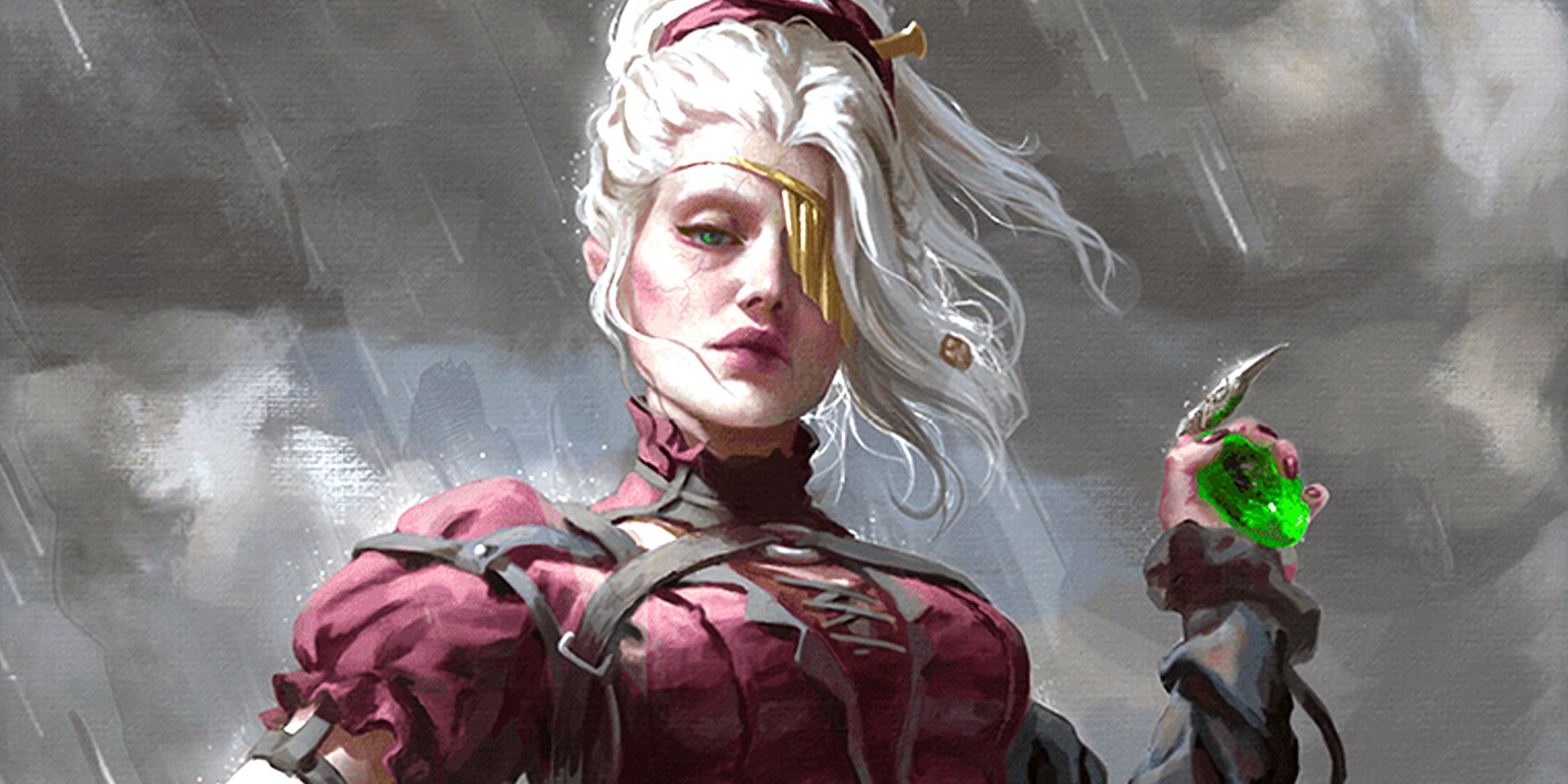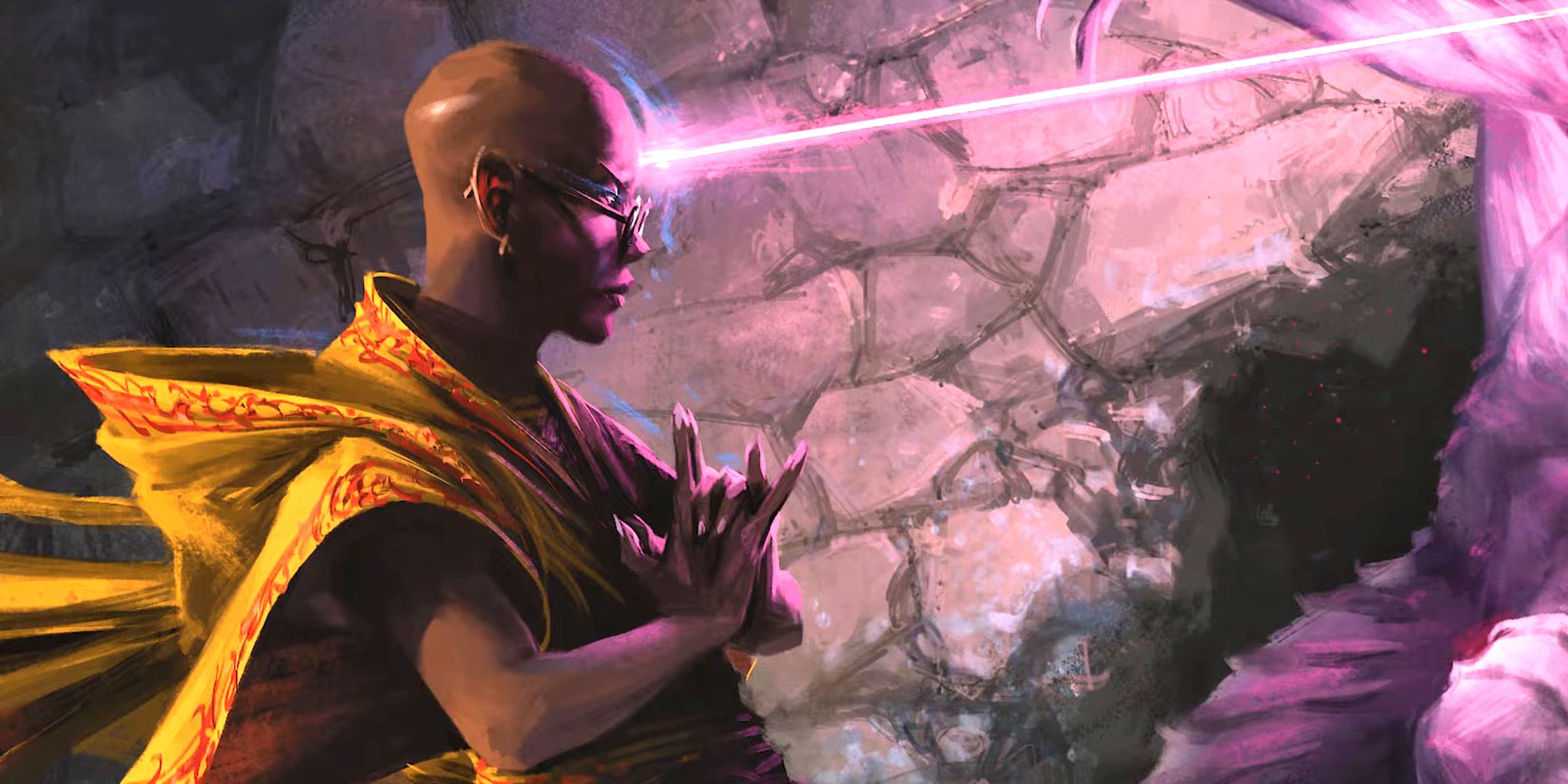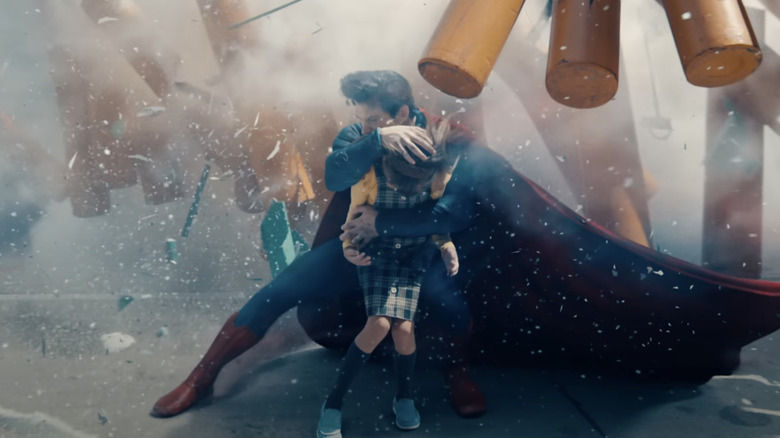The typical starting location for Dungeons & Dragons campaigns tends to be a tavern. It makes sense, it’s a good location for wayward adventurers to stop in and congregate, so you don’t have to come up with too much of a backstory to start this way. Still, if you’ve played a lot of D&D, you might be looking for a fresh way to start your campaigns.
Luckily, there are plenty of exciting alternatives that you can use for D&D starting locations. Some you may want to reserve for more experienced players, either because they are more difficult to handle, or because they ask for a bit more cooperation from the party. However, if you can make it work with your group, this could be an exciting change of pace from the cliché tavern opening.
10
Visiting An Important Location
D&D Has A Lot Of Notable Places The Party Could Meet
Dungeons & Dragons has a variety of notable locations that could serve as more thematic meeting places for your party than a simple tavern. One great example is Candlekeep, an extensive library and fortress where all kinds of interesting experiments and academic pursuits take place. You could even use a one-shot adventure from the Candlekeep Mysteries adventure module to help kick-start the campaign before getting into your main story.
Related
A New D&D Video Game Is On The Way & Will Continue The Best Part Of Baldur’s Gate 3
According to Wizards of the Coast, a new single-player Dungeons & Dragons game, akin to Baldur’s Gate 3, is now in development at Giant Skull.
Alternatively, if you’re making your own campaign, you can create your own iconic location that’s unique to your world. This can help you establish a tone for the campaign and introduce some world-building elements. For instance, a campaign I’m running takes place in an arcanepunk setting that is experiencing its version of the industrial revolution. One of the early locations I created was a factory where workers were striking, introducing the noble class’ unfair labor practices and some of the tensions in the city caused by technological advancement.
9
Traveling Together On A Ship
The Close Confines Of Ships Can Force Players To Work Together
Starting a D&D campaign on a ship can have a lot of the same advantages as setting it in a tavern. It’s a small enough location that you can plan out every detail, and your players’ characters can naturally gravitate toward one another if they are the only interesting people there. However, where a ship works better than a tavern is in its potential to immediately jump into action after introductions have been made.
Maybe the ship gets caught in a storm, forcing the party to use their unique skills to safely get everyone through. If you want to introduce combat, pirates or a variety of nasty sea creatures can attack the ship. This can also be a good way to kill off the ship’s existing crew, giving the players agency over where they take it next. Or, if you want to shake things up, maybe your party are the pirates and the campaign starts with them attacking another ship.
8
Invited To The Same Social Function
Weddings, Funerals, Or Other Functions Can Be A More Interesting Beginning
A slightly more thematic option than just having players meet at a tavern could be instead having them all attend the same social function. Maybe this is a high-society wedding that can introduce players to a variety of important political players who will influence the events of the campaign. Your party could have earned invites for their heroics, giving them a good way to include some elements of their backstory in their introduction.
If you want a more somber affair, perhaps they are attending a vigil or funeral for a fallen hero or missing adventurer that was lost on an important quest for their community. This could inspire your party to take up arms and try to finish the quest this fallen hero failed to complete. This would also create a sense of tension, since players go into the quest knowing that a more experienced adventurer has already died trying.
7
Stranded In A Remote Location
Stranding Your Party Forces Them To Cooperate
Not all D&D parties start out with all the characters knowing each other. This sometimes forces players to ask why their characters would all decide to start traveling together. A great way to do this is to start the campaign with your party stranded somewhere that forces them to work together, despite differences they may have. This is a great way to have parties with some internal conflict but without the easy answer of one member just deciding to leave the group.

Related
I’m Scared For D&D’s Newest Unearthed Arcana Class
The addition of the Psion in Unearthed Arcana has a lot of potential, but that doesn’t mean it will make it into Dungeons & Dragons in its best form.
If you’re looking for an official D&D adventure module, The Curse of Strahd does this by trapping the party in Barovia. You can also look to Baldur’s Gate 3 for inspiration, as the game does a great job showing why the main party would all stick together, despite not necessarily getting along at first. Giving your party a compelling reason to work together can create a stronger party dynamic than simply having them drift together for the sake of the game.
6
Put The Party In Jail Together
A Jail Break Can Be A Fun First Mission
Similar to stranding your characters somewhere, another great way to force a disparate group to come together is to stick them all in a jail cell with one another. They can ask each other why they’re there, giving your players a fun chance to come up with a reason their characters might be imprisoned. This setting also gives your party an immediate goal when the game starts: escape.
A prison break story in D&D can be fun for multiple reasons. As a DM, you get to decide what type of precautions a prison might take in a world where magic is part of daily life. Maybe your party’s spellcasting focuses have been confiscated, forcing them to get creative before simply using a spell to blast their way out of prison. You can also have a riot break out if you want some combat, but it can be lower stakes since prisoners will be unarmed and unable to cast spells.
5
A Montage Can Give Individual Characters Time To Shine
Creating A Series Of Unique Scenes For Each Character Can Be A Fun Intro
For D&D or other TTRPG games that begin in a city, I sometimes start the campaign by giving my players some multiple-choice questions to see how their characters would react. I then craft quick unique scenes based on the most interesting responses that each player goes through individually. To avoid any one player taking up too much time while anyone waits, I structure this like a montage that is dictated by initiative order. Each player gets a few minutes in their respective scene before moving on to someone else.
Ideally, these scenes won’t take up more than the first 30 minutes or so of a session, which does mean this works better with a small group. Still, it can be a more interesting way to learn about each player’s character than simply having them say their name, class, and what they look like. You can also make each scene tie into a larger plot hook which then brings the party together.
4
Starting Mid-Combat Has Several Advantages
Players Get To Test Their Characters And Introduce Themselves Through The Fight
After spending time creating characters, sometimes players are eager to hit the battlefield and see what they can do. This is especially true if you’re starting a campaign at a higher level, and players are excited about their unique builds. Instead of having your players try to rush through introductions to get to the action, you can just start your campaign in the middle of a fight.
You can also use starting with a fight as a way to encourage players to blend role-playing with combat. Many players will likely be eager to show off the unique personalities of their characters when the game starts, so it’s a good time to capture that energy and put it towards creating more engaging combat. I find players are sometimes hesitant to role-play during combat encounters, so this could be a good way to try and break that habit.
3
Put The Party In Conflict With Each Other
Players Who Are Comfortable Together Will Enjoy A Chance To Fight
Typically, a new D&D party comes together to work towards a common goal, so it can be a fun subversion of this to start characters out in conflict with one another instead. Think of scenes like in the first Guardians of the Galaxy movie where the Guardians meet one another by getting into a fight. Giving your party members reasons to target one another could be a fun way to start a campaign with a bit of conflict that is lower stakes, since you can trust your players not to kill one another.
Now, this style of campaign start can be fun, but it’s important you do it with the right kind of group. I mostly run games for a close group of friends who I’ve been playing with weekly since 2020, so I know that my players can handle their characters fighting one another without it causing any real-life conflicts. If your group doesn’t know one another too well, then you may want to avoid using this method.
You Can Start The Campaign With A Look Ahead At Future Builds And Abilities
Even if you’re starting out a campaign at level one, experienced D&D players likely know how they want to build their characters for at least the next few levels. One fun thing you can do with these experienced parties is to start the game in media res. This refers to a story that begins in the middle of the action before flashing back to an earlier point.

Related
D&D Reveals New Psionic Class In Unearthed Arcana That Lets You “Reshape Flesh Itself”
D&D’s new Unearthed Arcana addition focuses on a Psion class that doubles down on mental powers highlighted in the 2024 rules revision.
One fun way to do this is to start with a higher-level combat scenario and end on a cliffhanger. Maybe your fifth-level party has just defeated a wave of enemies, but a powerful boss appears. Then, before the fight, you flash back to level one and begin the story. Go vague on the details of why the initial combat is happening, but make sure you describe the location in detail. That way, when players show back up here later, they’ll realize they’re about to start the fight from your prologue, which can create tension but also a sense of accomplishment.
1
Starting With Your Party Already Dead Is Very Unique
D&D Has Various Afterlives To Explore
Death isn’t always the end in the world of D&D. There are several afterlives in D&D where characters’ souls can end up after they die, and one of these could be an interesting place to start your campaign. You’ll probably want to start with a less-than-pleasant option, giving your players a reason to escape. After all, if your character has already landed in paradise, they might not want to jeopardize their cozy afterlife for a chance to come back.
Avernus is a good option, as it’s Dungeons & Dragons‘ equivalent of Hell. Players will likely want to leave this demon-infested land and head back to the land of the living as quickly as possible. This may be a better option for a game that starts at higher levels, just because level one characters might not have the resources necessary to escape such a dangerous location.

- Original Release Date
-
1974
- Publisher
-
TSR Inc., Wizards of the Coast
- Designer
-
E. Gary Gygax, Dave Arneson
- Player Count
-
2-7 Players


